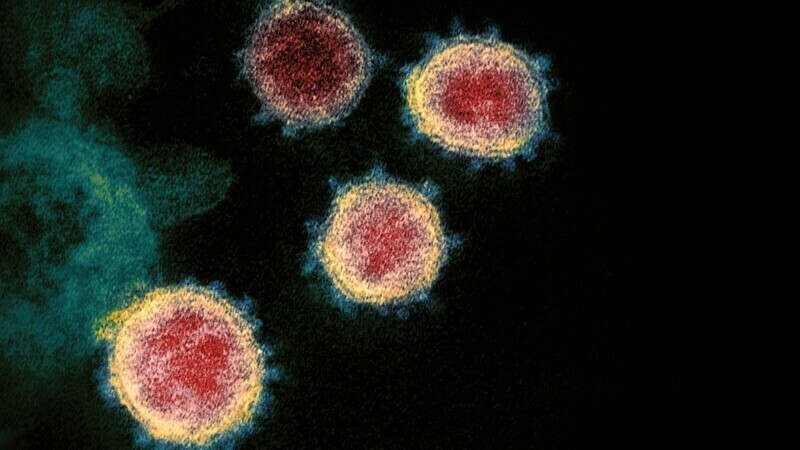hankyoreh
Links to other country sites 다른 나라 사이트 링크
Omicron now accounts for 99.96% of COVID-19 cases in S. Korea

The detection rate for the Omicron variant among all South Korean COVID-19 cases is approaching 100%.
At 99.96% of all cases, the variant has all but completely supplanted the previous Delta variant within 100 days of its arrival in South Korea.
Disease control authorities continue to recommend vaccination, noting that the fatality rate of the Omicron variant was six times higher than the seasonal flu for unvaccinated patients.
In a regular briefing Monday, Korea Disease Control and Prevention Agency (KDCA) Commissioner Jeong Eun-kyeong said, “The detection rate for the Omicron variant among domestic infection last week was 100% (5,627 cases), and the vast majority of imported cases [99.2%, 387 cases] were also found to be the Omicron variant.”
First detected in a 40-something married couple arriving from Nigeria on Nov. 24, Omicron became the dominant variant in South Korea by the third week of January. The detection rate has doubled in the six weeks since then.
The detection rate for the BA.2 subvariant of Omicron — sometimes called “stealth Omicron” — increased to 22.9%.
The subvariant accounted for just 3.8% of cases during the second week of February and 4.9% during the third week. But the rate doubled in subsequent weeks, reaching 10.3% in the fourth week and 22.9% last week.
“According to the World Health Organization’s assessment, the BA.2 subvariant may have a transmissibility roughly 30% higher than [regular] Omicron, with a generation time averaging 0.5 days faster,” Jeong said.
“There will need to be monitoring as to how much of an effect this will have [on the virus’s spread],” she added.
At 0.09%, disease control authorities put the fatality rate for the Omicron variant roughly on par with the seasonal flu.
But among unvaccinated patients, the fatality rate was 0.6%, or six times higher than the rate for the flu. According to KDCA estimates, the fatality rate for influenza between 2013 and 2018 was in the range of 0.04%–0.08%.
By age group, patients under 60 who had received three vaccine doses showed a 0% fatality rate. Even among high-risk patients aged 60 and up, the fatality rate among patients with a booster dose was 0.52%, or less than one-tenth of the 5.53% rate among unvaccinated patients.
“When Omicron’s fatality rate is described as being equivalent to the seasonal flu, that’s only true for people who have received three vaccine doses,” said Son Young-rae, head of the social strategy team at Korea’s Central Disaster Management Headquarters.
“Unvaccinated people have to deal with a fatality rate that is far higher than for the seasonal flu,” he noted.
Among the COVID-19 patients who died over the eight-week period through March 5, 50.2% were unvaccinated.
As of Monday, the double vaccination rate was 94.2% for currently eligible recipients aged 12 and up. This means that half the COVID-19 deaths have occurred in the 5.7% of the population who have not been vaccinated.
By Jang Hyeon-eun, staff reporter; Lim Jae-hee, staff reporter
Please direct questions or comments to [english@hani.co.kr]

Editorial・opinion
![[Column] Season 2 of special prosecutor probe may be coming to Korea soon [Column] Season 2 of special prosecutor probe may be coming to Korea soon](https://flexible.img.hani.co.kr/flexible/normal/500/300/imgdb/original/2024/0426/3317141030699447.jpg) [Column] Season 2 of special prosecutor probe may be coming to Korea soon
[Column] Season 2 of special prosecutor probe may be coming to Korea soon![[Column] Park Geun-hye déjà vu in Yoon Suk-yeol [Column] Park Geun-hye déjà vu in Yoon Suk-yeol](https://flexible.img.hani.co.kr/flexible/normal/500/300/imgdb/original/2024/0424/651713945113788.jpg) [Column] Park Geun-hye déjà vu in Yoon Suk-yeol
[Column] Park Geun-hye déjà vu in Yoon Suk-yeol- [Editorial] New weight of N. Korea’s nuclear threats makes dialogue all the more urgent
- [Guest essay] The real reason Korea’s new right wants to dub Rhee a founding father
- [Column] ‘Choson’: Is it time we start referring to N. Korea in its own terms?
- [Editorial] Japan’s rewriting of history with Korea has gone too far
- [Column] The president’s questionable capacity for dialogue
- [Column] Are chaebol firms just pizza pies for families to divvy up as they please?
- [Column] Has Korea, too, crossed the Rubicon on China?
- [Correspondent’s column] In Japan’s alliance with US, echoes of its past alliances with UK
Most viewed articles
- 1Why Kim Jong-un is scrapping the term ‘Day of the Sun’ and toning down fanfare for predecessors
- 2After election rout, Yoon’s left with 3 choices for dealing with the opposition
- 3Two factors that’ll decide if Korea’s economy keeps on its upward trend
- 4‘We must say no’: Seoul defense chief on Korean, USFK involvement in hypothetical Taiwan crisis
- 5AI is catching up with humans at a ‘shocking’ rate
- 6Noting shared ‘values,’ Korea hints at passport-free travel with Japan
- 746% of cases of violence against women in Korea perpetrated by intimate partner, study finds
- 8Why Korea shouldn’t welcome Japan’s newly beefed up defense cooperation with US
- 9Amnesty notes ‘erosion’ of freedom of expression in Korea in annual human rights report
- 10Ethnic Koreans in Japan's Utoro village wait for Seoul's help